What’s New In Transact 4.5?
Machine Learning | Machine Learning of Global Document Types
The default Batch Class list in Ephesoft Transact includes a Global Batch Class. Here, you can create and configure Global Document Types which can then be inherited (along with all configuration details) by any other Batch Class.
Global Document Types can be configured and modified only in the Global Batch Class. Roles for machine learning are defined here as well:
- All users with assigned classification roles will be able to use machine learning at the Review stage.
- All users with assigned extraction roles will be able to use machine learning at the Validation stage.
- If there are no user roles assigned for a Document Type, it is assumed that machine learning is only enabled for super admin.

All changes made to the Global Batch Class are automatically propagated to all Batch Classes using Global Document Types.
Note: Batches cannot be processed in the Global Batch Class.
In previous versions of Transact, machine learning of Global Document Types was not supported. The user could import Global Document Types into a local Batch Class but could not perform machine learning for them – the application displayed a pop-up message saying, “Machine Learning of a Global document(s) is not allowed”.
In Transact version 4.5.0.0, machine learning of Global Document Types is supported. Now, you can use machine learning to classify Global Document Types on the Review-Validate screen. The learning performed will be saved and applied only for a selected local Batch Class.
Let’s consider an example to machine learn a Global Document Type in a local Batch Class.
1. Open a Batch Class.
2. Click Add and select the option Add Globally.
This will list all Global Document Types.
3. Select the Document Type which you want to inherit in this Batch Class.
This will add the Global Document Type in the list as shown below. This Document Type inherits all configurations from the parent Global Batch Class along with the index fields and extraction rules.

4. Now, go to the Upload Batch screen and initiate the batch processing workflow.
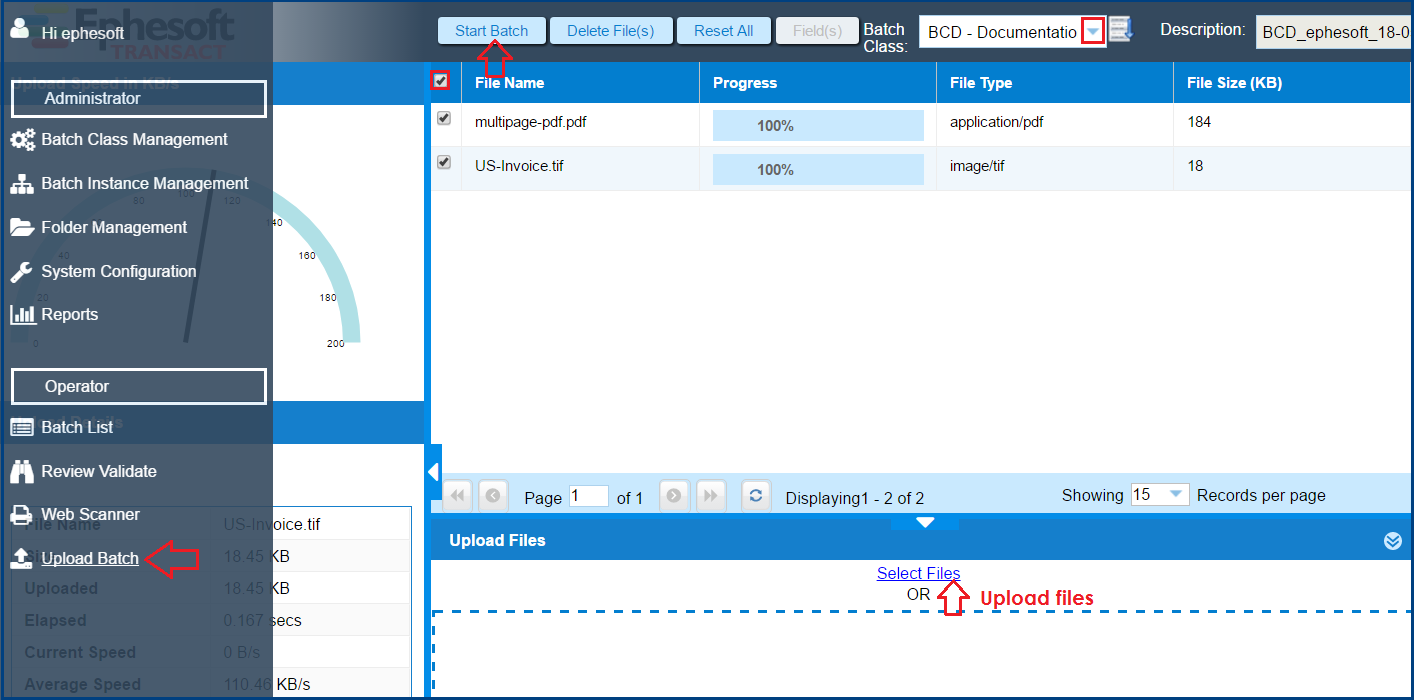
5. Go to the Batch List page, select the Batch, and trigger the manual Review process.
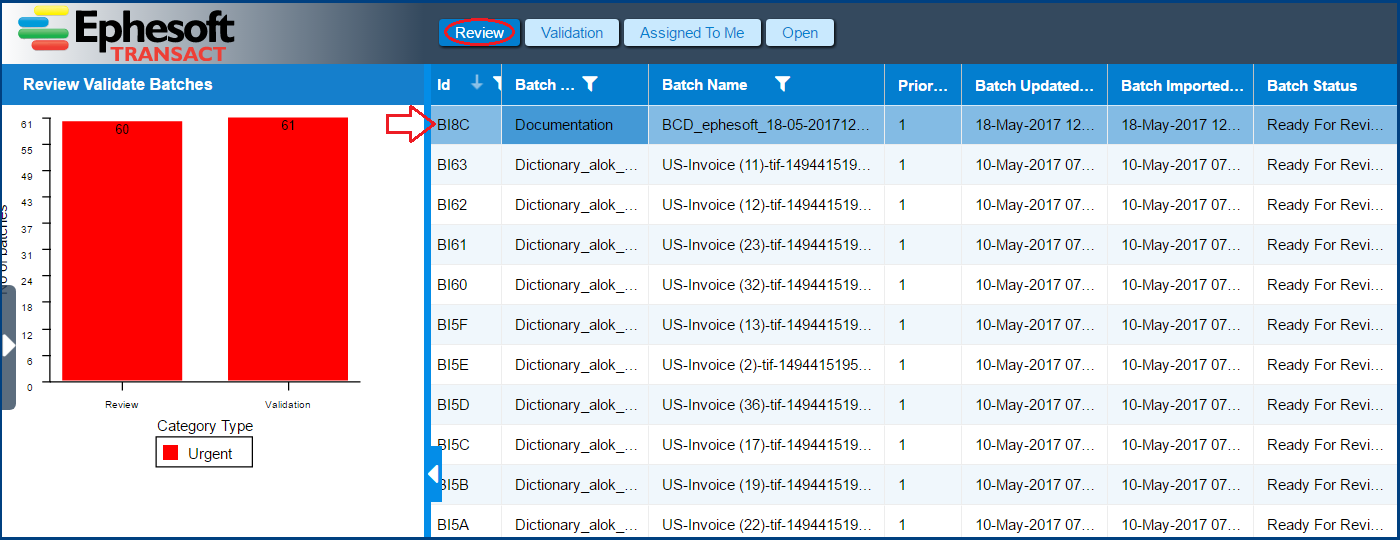
This will take you to the Review screen where you can verify the classification results.
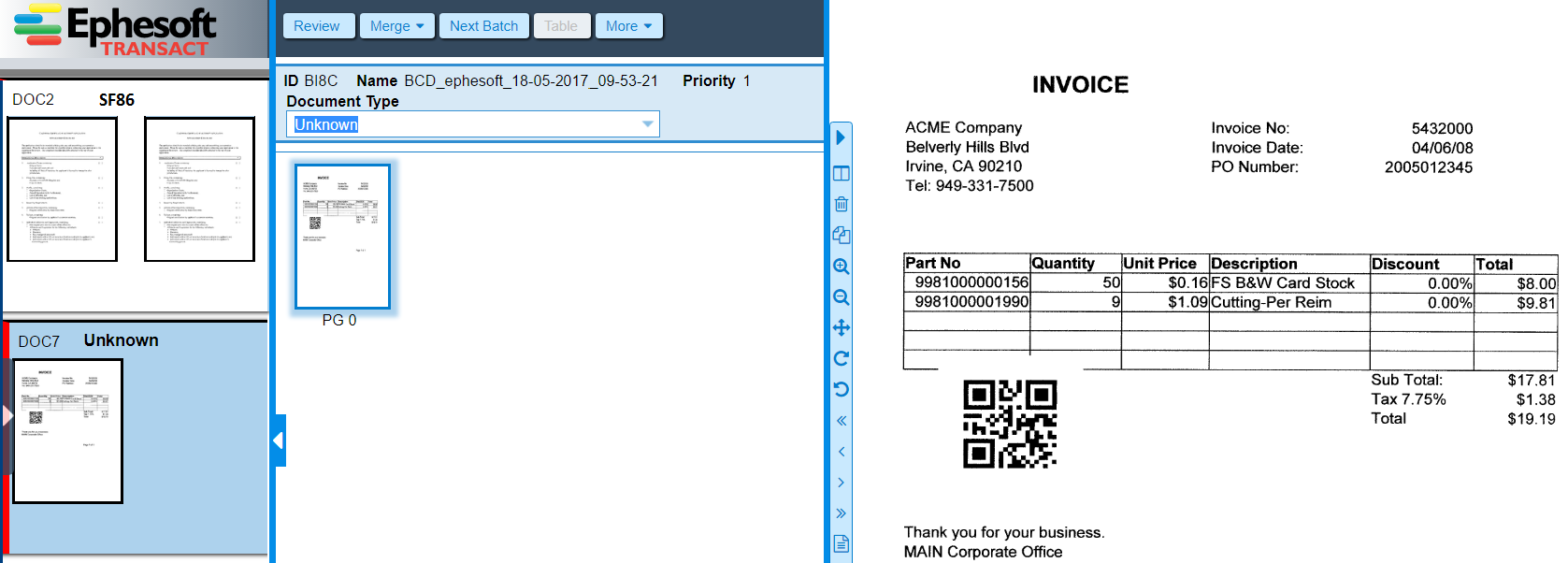
6. Let us now perform machine learning for the Invoice document.
- In the Document Type drop-down, select the correct Document Type.

- In the More drop-down, click Learn File(s) to perform machine learning.
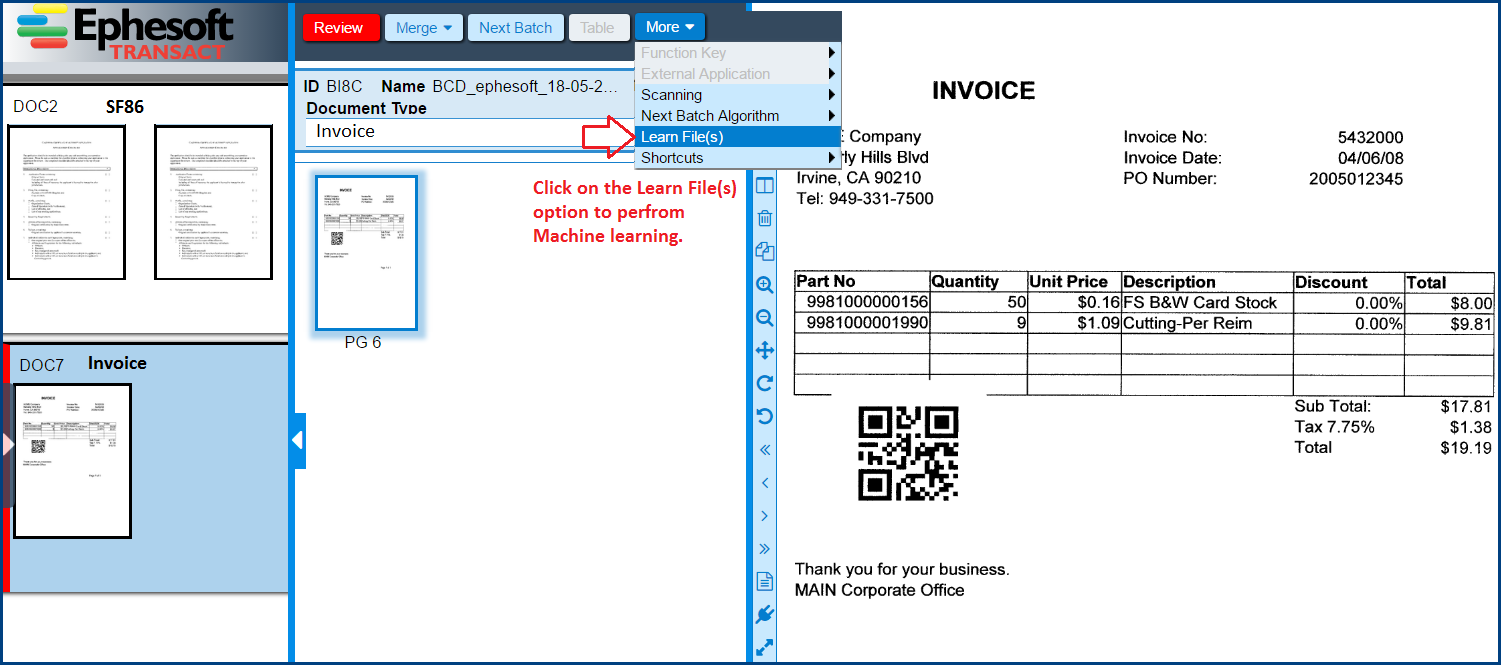
The Document Machine Learning pop-up window opens.
As you can see, the document is classified as a Middle Page but should have been classified as a First Page seeing as it is a single page document.

- Drag and drop the document to the First Page section and click Learn Files.
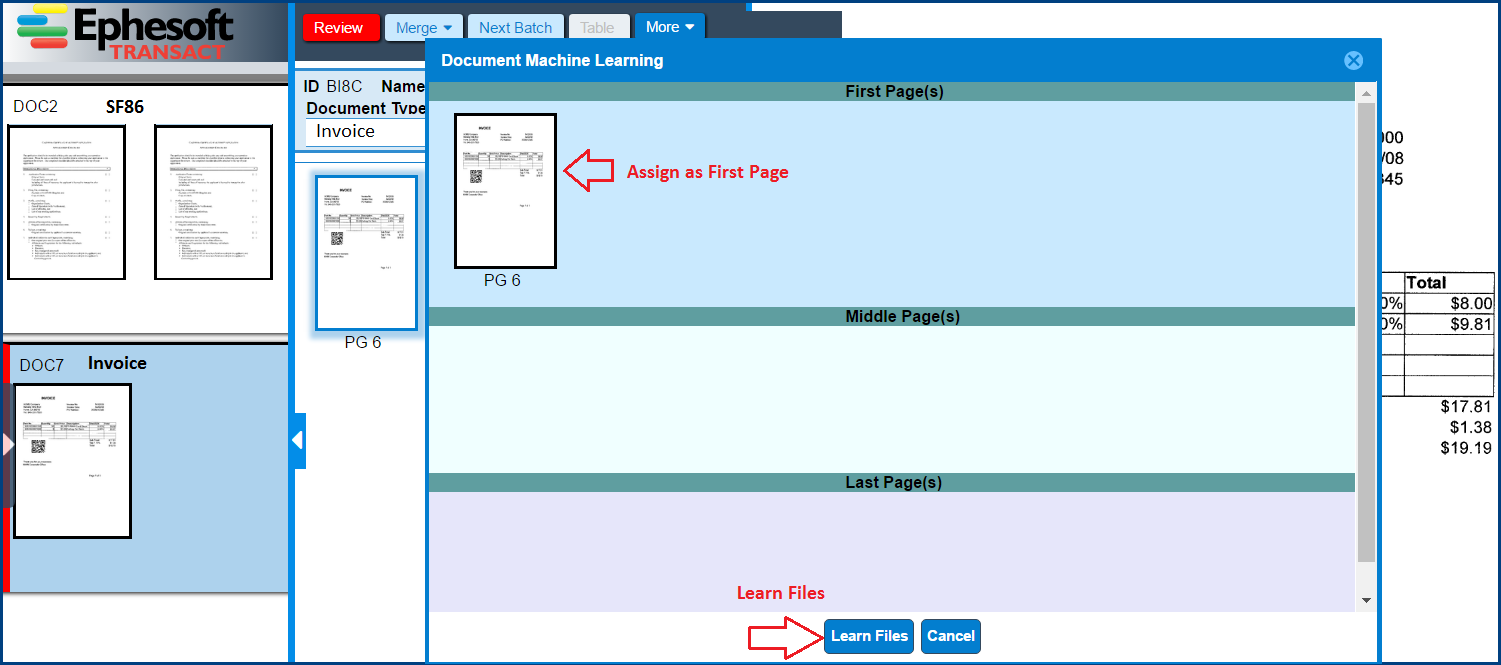
7. Click Review. A confirmation message appears. Click OK to continue the process.

The learning is saved successfully for the selected Global Document. You can now continue with the batch processing workflow.
